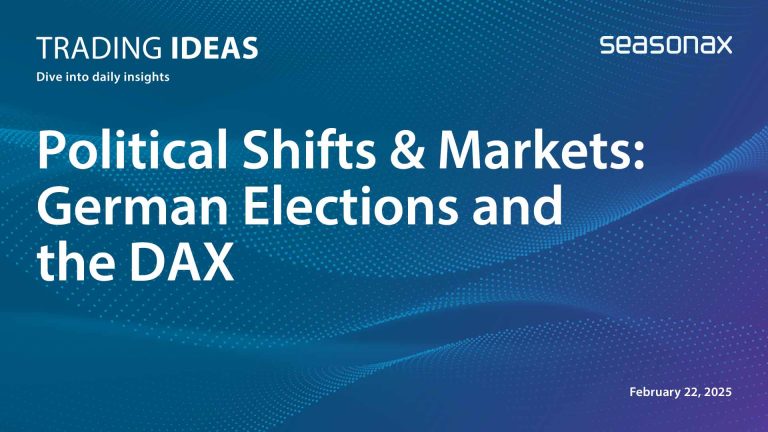Dear Investor,
The US presidential elections and the corona crisis are currently dominating financial markets. Perhaps this is a good reason to let our gaze wander into the distance.
Let us therefore take a look at the Japanese stock market. For one thing, Japan is not as severely affected by the corona virus as Europe and the US. In addition, Japan’s stock market is treating investors to a neat “Christmas present”: a seasonal rally pattern.
Japanese stocks close to a breakout
First let us look at a standard price chart. The following chart shows the moves in the Japanese benchmark stock market index Nikkei 225 over the past five years.
Nikkei 225, 2015-2020

Japanese stocks are closing in on a breakout
Source: Comdirect
As indicated by the green horizontal line, a long-term resistance zone has been established around the 24,000 level. If the Nikkei succeeds in overcoming it, an accelerated advance should typically ensue.
Japanese stocks show seasonal strength until early May
Most importantly, Japanese stocks are subject to excellent seasonality from now until May of next year. The seasonal chart below shows the typical pattern of the Nikkei 225 in the course of a calendar year. It has been calculated by averaging the market’s moves of the past 53 years. The horizontal axis shows the time of the year, the vertical axis depicts the level of the seasonal index.
Nikkei 225, seasonal pattern, calculation based on the past 53 years

Japanese stocks typically rally until the beginning of May
Source: Seasonax (click here to examine the seasonal chart)
As the chart shows, the Japanese stock market typically rallies from the end of October/ middle of November until the beginning of May in the following year.
The most interesting phase from a seasonal perspective starts on 11 November and ends on 06 May of the following year.
Over the past 53 years, the average return of the Nikkei 225 in this time period amounted to 7.95 percent. This corresponds to an annualized gain of 17.16 percent.
Keep in mind that these figures include the thirty year-long bear market in Japanese stocks that started in 1990. Had Japan experienced a bull market in line with the rest of the world, the results would have been better.
Gains of up to 63.43 percent in the Nikkei!
In the seasonally strong phase between 11 November and 06 May the Japanese stock market generated gains for investors in 39 out of 53 cases.
The following bar chart shows the return of the Nikkei in the relevant time period from 11 November to 06 May in every year since 1967. Red bars indicate years with negative returns, blue bars years with positive returns.
Nikkei 225, return between 11 Nov and 06 May in percent, in all individual years since 1967
Positive returns dominate
Source: Seasonax (click here to highlight the above mentioned period on the chart and have a closer look at a detailed statistical analysis of the pattern)
One can clearly discern that blue bars are predominating. The best return – achieved in 2012 – amounted to 63.43 percent!
Evidently the impending strong seasonal phase in the Japanese stock market could turn out to be quite profitable.
The sun rises first in the East!
The Japanese stock market offers quite a favorable risk-reward profile at present. In contrast to the US stock market it has not become overheated in recent years; and contrary to Europe, corona-related risks are comparatively moderate in Japan, at least so far.
But above all, a strong seasonal uptrend should prevail in coming months.
Enter the world of seasonal opportunities
Apart from the stocks and indexes we have presented in this issue of Seasonal Insights, there are numerous other individual stocks that display recurring seasonal trends that are starting right now.
The most profitable trades are just few mouse clicks away!
Yours sincerely,
Dimitri Speck
Founder and Head Analyst of Seasonax



